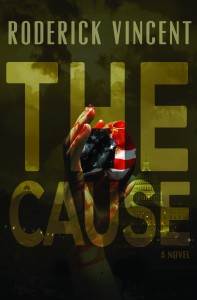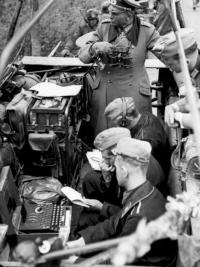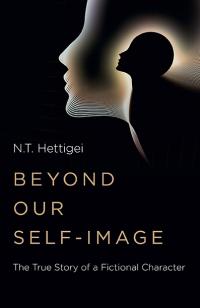
 I began writing The Cause because I had (and still have) great
concern for my country. I state this in the first pages of my book, then at the end in the author’s note. I believe the United States has reached a point where the vote no longer matters,
where, as one of my Minutemen characters states, “moral climates have no atmosphere.” A gray line always exists between a revolutionary and a terrorist. Even Gandhi believed there were
limits to peaceful protest and in certain circumstances violence could be used to secure justice. Through the characters in The Cause, I wanted to explore the line where the government
is evolving into a totalitarian state (we see plenty of evidence of it today) and pose the traitor/patriot question around a group of revolutionaries in the novel who see violence as the only
remaining option for meaningful change. George Orwell wrote about the fully evolved totalitarian state in 1984. My intention was to write something futuristic and dystopian that was
pre-Orwellian where the shape of a totalitarian state was still forming (only a few years into the future). I wanted the story to have topical elements to it, intriguing characters, and finally to
show both sides of the story through a shattered mirror in the sense that nothing is clear. Many of the technologies and NSA codenames used throughout the novel are in existence today.
Simple Google searches on terms used will uncover a plethora of information. There is a “truth in The Cause” section too. In this way, I wanted to place the reader on the
fringe of our world today by taking a step farther into the future to ask the question, “How far away are we?”
I began writing The Cause because I had (and still have) great
concern for my country. I state this in the first pages of my book, then at the end in the author’s note. I believe the United States has reached a point where the vote no longer matters,
where, as one of my Minutemen characters states, “moral climates have no atmosphere.” A gray line always exists between a revolutionary and a terrorist. Even Gandhi believed there were
limits to peaceful protest and in certain circumstances violence could be used to secure justice. Through the characters in The Cause, I wanted to explore the line where the government
is evolving into a totalitarian state (we see plenty of evidence of it today) and pose the traitor/patriot question around a group of revolutionaries in the novel who see violence as the only
remaining option for meaningful change. George Orwell wrote about the fully evolved totalitarian state in 1984. My intention was to write something futuristic and dystopian that was
pre-Orwellian where the shape of a totalitarian state was still forming (only a few years into the future). I wanted the story to have topical elements to it, intriguing characters, and finally to
show both sides of the story through a shattered mirror in the sense that nothing is clear. Many of the technologies and NSA codenames used throughout the novel are in existence today.
Simple Google searches on terms used will uncover a plethora of information. There is a “truth in The Cause” section too. In this way, I wanted to place the reader on the
fringe of our world today by taking a step farther into the future to ask the question, “How far away are we?”
The Cause is actually my second novel. My first literary novel, Blueprints from the Beginning, was never accepted by an agent, and it had its weaknesses, so I shelved it. One of the tough-to-swallow critiques of it was it had a slow-moving plot. That particular criticism stoked a fire in me of how I could write something with a gas-pedal storyline that would still hold true to my literary love for smart, intelligent writing. I had a minimal plot sketch for a novel (originally titled Arrhythmia) that would incorporate topical events such as Federal Reserve largess, militarization of the police, robotics, Anonymous, Occupy, and Take the Nation Back themes, all of which I saw were somewhat buried elements in the miasma of popular culture today. Around this time, the Greece riots erupted in the news. Imagining a similar, futuristic canvas of the U.S., where the State begins losing power and the distortion of truth no longer captivates the audience the way it once did, appealed to my sense of obligation. How would the government react in a circumstance where the people begin to revolt? Presently, one only needs to look at Ferguson to answer such a question (see free short story based on characters in The Cause here: http://roderickvincent.wordpress.com/2014/08/19/where-is-the-president/). Then I thought about how I could present one realistic event with latent potential to change everything. It would serve as the catalyst for the second American Revolution because the economy would have already collapsed in spectacular fashion due to stagnant, destructive policy. The first character I came up with was Seee. Seee because he would be a Morpheus sort of character (from The Matrix), removing the blindfolds off of his followers, acting as role model for his sympathizers. Yet, the story couldn’t be told from Seee’s point of view; otherwise it would have been too biased. Thus, Isse Corvus enters as the main narrator to neutralize the bias, and NSA Director Titus Montgomery to offer an opposing view.
Not long after the Greece riots started, my wife and I traveled to South Africa. We stopped in Cape Town for a few days to see some friends. One night, we went to a birthday party and met
Simon, a very charismatic African American guy who simply was the life of the party. We were in the car driving around Muizenberg and a very open conversation sprung to life about Apartheid and
race discrimination. Simon said something to the effect of, “Where are all the black superheroes, man?” We came up with Blade and Shaft, but the list was small. Since the NSA was
beginning to hit the news (still before Edward Snowden), and I had a nascent character sketch for a hyper-intelligent hacker who would be affiliated with the Anonymous network, the lights went
on. Race was also a theme in Blueprints from the Beginning where a young genius befriends an old, African American man who hates whites. But in Blueprints, the theme leaned towards
healing the racial divide, where in The Cause, it focuses about breaking the stereotype of geeky-white-male when we think of hacker. So Isse Corvus was born, a pseudo-Neo
character who is exposed to an ugly truth. His will and ideology are challenged, and he must ultimately make a decision about how his life will move forward. But Isse encounters
obstacles, having to prove himself at every turn of the corner. Seee doesn’t have blind faith in him knowing he is playing a double game. He must earn respect the hard way, through brutal
combat. Since I have some background in computers, and I thoroughly researched the NSA, hopefully the hacker scenes feel genuine as well. My hope is the novel enthralls some people,
creating awareness out of a hard-core, ballsy plot.
Categories:
0 comments on this article







